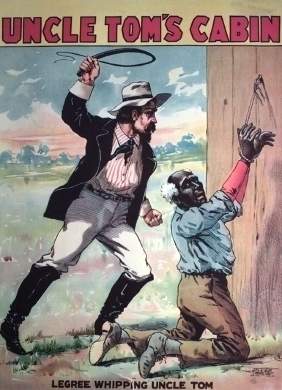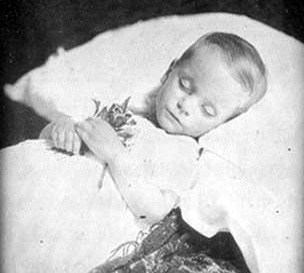 ‘It was through books that I first realised there were other worlds beyond my own; first imagined what it might be like to be another person,’ wrote novelist Julian Barnes in a recent Guardian essay. It’s an enticing thought that reading fiction might help us escape the straitjacket of our egos and expand our moral universes. Modern literary theorists are, however, decidedly sniffy about the notion. ‘They see the idea as too middlebrow, too therapeutic, too kitsch, too sentimental, too Oprah,’ according to Steven Pinker in his latest tome, The Better Angels of Our Nature.
‘It was through books that I first realised there were other worlds beyond my own; first imagined what it might be like to be another person,’ wrote novelist Julian Barnes in a recent Guardian essay. It’s an enticing thought that reading fiction might help us escape the straitjacket of our egos and expand our moral universes. Modern literary theorists are, however, decidedly sniffy about the notion. ‘They see the idea as too middlebrow, too therapeutic, too kitsch, too sentimental, too Oprah,’ according to Steven Pinker in his latest tome, The Better Angels of Our Nature.
Yet Pinker, together with philosopher Martha Nussbaum, psychologist Keith Oatley and historian Lynn Hunt, is amongst a new band of champions for the idea that reading can indeed change not just ourselves, but the world. If we want to put this idea to the test, a good starting point is one of the most popular novels of the nineteenth century, Harriet Beecher Stowe’s Uncle Tom’s Cabin. What interests me, though, is not simply the extraordinary social impact of this admittedly sentimental story, but what its writing reveals about the origins of morality itself.
Harriet Beecher Stowe was born in 1811 into a family of evangelical and intellectual Protestant preachers. Growing up in New England, and then moving out west to Cincinnati, she had a privileged upbringing, living in well-appointed homes with servants, and also attending some of the finest schools for young ladies in an era when most women were denied access to formal education. A ravenous reader and excellent scholar, she became a teacher before marrying a stolid and lacklustre professor of biblical studies somewhat reminiscent of Mr Casaubon from George Eliot’s Middlemarch.
The great political issue of her age was slavery. There was increasing dissent in the north of the country against the cruelty and inhumanity of the slave economy that prevailed in the southern states, especially on the cotton plantations. Some of Beecher Stowe’s brothers were abolitionists, but even in the 1840s, when the newspapers were full of debate on the issue, she displayed little interest in the growing movement against slavery, and was more concerned with expanding women’s access to education and bringing up her bevy of children.
Her life changed radically in 1852, when she published her novel Uncle Tom’s Cabin. A vibrant and moving story that was effectively a political tract against slavery, it sold ten thousand copies in the first week and within a year three hundred thousand copies had been sold in America and nearly a million in England. By 1860 Beecher Stowe was the most famous writer in the world. On the eve of the civil war, in 1861, Uncle Tom’s Cabin had sold an astonishing four million copies. When the author met Abraham Lincoln in the White House a year later, he is said to have greeted her with the words, ‘So you’re the little woman who wrote the book that started this great war!’
It is, undoubtedly, one of the most widely read and influential books ever written. While today many people ridicule its sentimental depiction of African Americans and excessive melodrama, its power lies in relating the historical truth of slavery. That is why George Orwell referred to it as a ‘good bad book’ – one which is valuable not for its literary merit but because ‘it is trying to be serious and deal with the real world’.
Centred on the life of a long-suffering black slave, Uncle Tom’s Cabin takes the reader into a world where human beings are bought and sold, and children are separated from their mothers by unscrupulous white traders in a system of institutionalised servitude that was generally accepted by the majority of society.
So what drove Beecher Stowe to write her book? Why did this genteel white woman, whose contact with African Americans was limited and who had barely travelled into the southern states, embark on writing a novel that inspired much of a nation to empathise with the plight of an oppressed minority?
One of the most important answers concerns a child. Charley was her sixth and favourite. Born in 1848, Beecher Stowe referred to him as ‘my pride and hope’, and she openly gave him more love and attention than any of her other children. But at the age of just a year and a half, he died in an outbreak of cholera that swept Cincinnati, killing nine thousand people. Her grief was extreme. It consumed her, haunted her. She could not escape the vision of him dying in agony before her eyes as she watched helplessly, unable to mitigate his suffering.
Charley’s death, however, was an inspiration for her transformation into an abolitionist and for the story of Uncle Tom’s Cabin. It was the singular event that ripped her open into empathy, for she could now understand how black slave women might feel when their children were taken from them to be sold, a common occurrence throughout the slave states. She wrote, ‘It was at his dying bed, and at his grave, that I learnt what a poor slave mother may feel when her child is torn away from her.’ In a related entry in her journal she noted, ‘I wrote what I did because as a woman, as a mother I was oppressed and brokenhearted with the sorrows and injustice I saw’. Charley’s death provided a searing moment of empathic insight, and it is unsurprising that the theme of the separation of mother and child is so prevalent throughout her novel. It was through her own experience of suffering that Beecher Stowe was able to step into the lives of people whose daily existence, in so many ways, was the opposite of her own.
Following Charley’s death, Beecher Stowe became more politicised than she had ever previously been. She was enraged by the Fugitive Slave Law of 1850, which stipulated that anybody who gave shelter, food or other assistance to an escaping slave could be fined a thousand dollars and sent to prison for six months. It is as if the death of her son helped bring into sharp relief the injustices of slavery and the absolute immorality of the legal system that supported it.
Another event brought her even closer to writing Uncle Tom’s Cabin. It occurred in 1851, a time in her life when her personal pain and anguish – due to multiple illnesses, being worn out by child-rearing, and Charley’s death – were leading her to identify increasingly closely with the suffering of Christ. While taking communion one winter’s day in a church in Maine, the thought of Christ on the cross brought forth in her mind a picture of a bleeding slave being whipped. She was moved to a ‘convulsion of tears’ and immediately wrote down what had happened when she returned home.
This image then transformed into a key narrative element of her novel, when the old man is whipped to death in the final pages, a clear symbol of the crucifixion. In other words, Beecher Stowe had found herself entering into the pain experienced by a slave via her personal identification with the agonies of Jesus nailed to the cross. It was an instance of empathic understanding, where her own suffering brought her into communion with the tragedies of others.
Art historians have pointed out that a primary purpose of religious images of the crucifixion, where Jesus has blood seeping from his wounds, is to have the viewer feel something of his pain, thereby promoting an imitation of Christ. Beecher Stowe used the image of Tom’s death to play a similar function for her readers. Her Christianity and her writing were both pervaded by an empathic spirit.
Following the success of Uncle Tom’s Cabin, Beecher Stowe became a spokesperson for abolitionists and an activist for the cause, supporting education for freed slaves and raising funds to buy children out of slavery. But she was certainly no radical agitator like William Lloyd Garrison. Nor did she regularly risk her life like Harriet Tubman and others who operated the Underground Railroad that helped fugitive slaves escape north into free states and Canada.
Her main contribution was to shift the worldview of her multitude of readers, by taking their imaginations into the horrific realities of lives that they had ignored for so long, and thereby fomenting the rebellion against slavery and its proponents that eventually played itself out in the American Civil War.
So yes, reading a novel can change the world. Which leaves an obvious question. Which novels have expanded your own moral landscape, and what was their magic ingredient?
Roman Krznaric is a founding faculty member of The School of Life. His latest books are The Wonderbox: Curious Histories of How to Live and How to Find Fulfilling Work. Follow him on Twitter @romankrznaric . This post originally appeared on his blog.


Pingback: Now We Are Two | The History of Emotions Blog